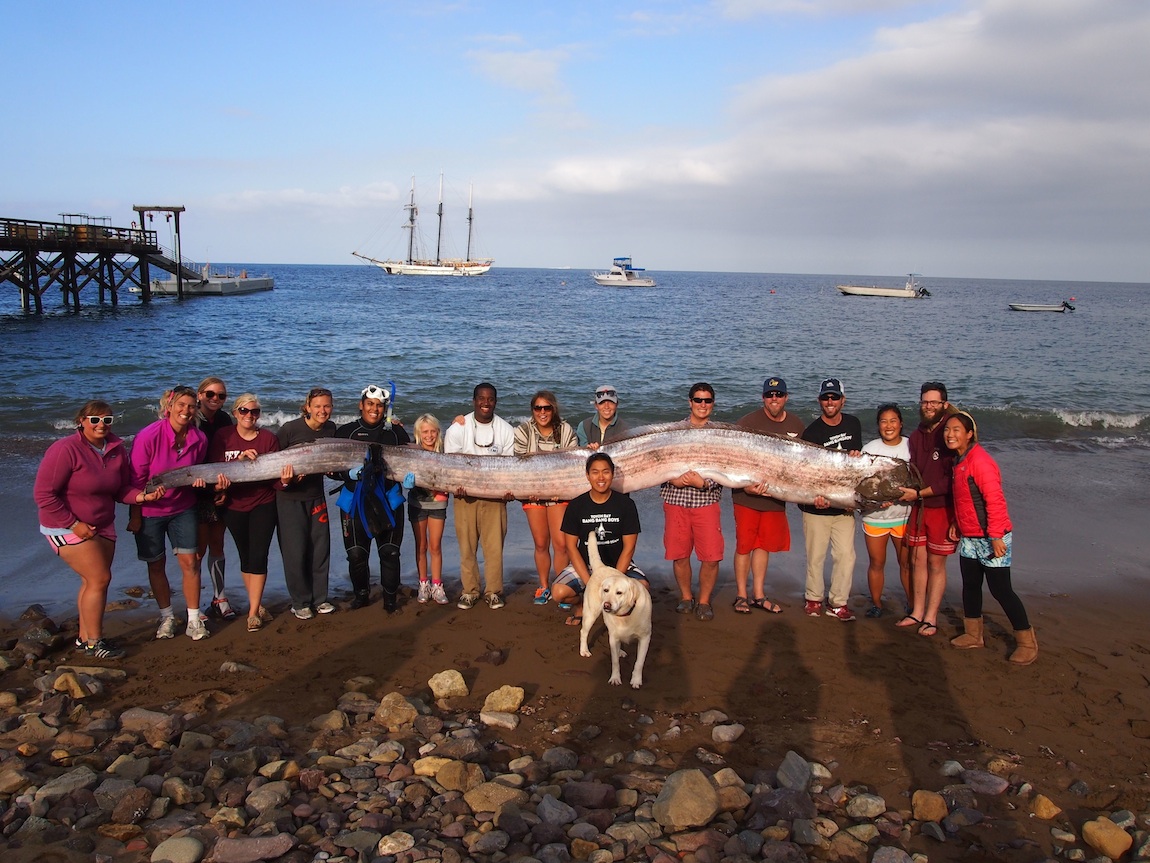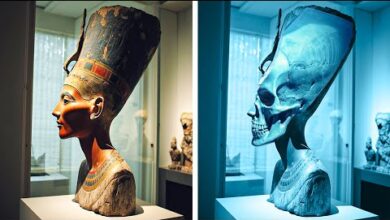Oarfish: Messenger of the Sea, Strange Signs Before the Tsunami !

**1. Introduction to the sea snake (oarfish)**
– The sea snake is a mysterious creature that lives on the ocean floor, known mainly from its dead bodies, especially when washed ashore.
– This fish is the longest bony fish in the world, known as the “king of the herrings” and is rarely seen alive, so information about its biology is very limited.
**2. Legendary images and history of the sea snake**
– Historically, the sea snake was considered one of the legendary monsters of the sea, evoking fear in the minds of people and often depicted on nautical charts.
– Their strange size, shape, and color have led to many mysterious stories from fishermen and sailors, including attacks on ships.
**3. 19th Century Discovery**
– In the 19th century, a few naturalists made rare observations of sea snakes, but the information collected was mostly unreliable and scattered.
– In the past two centuries, fewer than 250 cases of sea snakes being beached have been recorded, with the longest found reaching 23 feet.
**4. Observations and research in 2000**
– In 2000, the Villefranche-sur-Mer ocean observatory, in conjunction with space research organizations, deployed the La Boussole device, which collected data on the color of the water.
– The purpose of this device was to calibrate ocean observation satellites, as water color can indicate the presence of plankton, which are the basis of the ocean food chain.

**5. Impact of scientific equipment on marine life**
– The La Boussole device attracts many fish, including great white sharks, with the presence of these species around the device.
– David Duke, a biologist and diver, performed maintenance tasks on the device and happened to see a sea snake during an inspection.
**6. Encounter with a sea snake**
– During a dive, when the water was very turbid due to a plankton bloom, David saw a “long silver stripe” from the depths of the ocean — it was a sea snake.
– This first encounter allowed David to swim with the legendary fish, realizing that it swims vertically instead of horizontally as in ancient descriptions.
**7. Anatomical research in Japan**
– In 2014, many sea snakes were washed ashore in Japan, according to legend, these washings signaled an upcoming earthquake.
– Dr. Tyson Roberts, a sea snake expert, had the opportunity to study new specimens to determine their anatomical structure.
– Using modern technology such as MRI machines, he discovered that the sea snake’s brain is very small, only the size of a pea.
**8. Discover the senses and search methods of sea snakes **
– Although this fish has a complex nervous system, Roberts found that there are no external nostrils, making it difficult to determine the smell.
– He discovered that the sea snake’s nose is located in front of the jaw, which allows them to suck in water to sense the smell in the dark environment of the sea floor.

Giant oarfish have the ability to follow a scent trail in the ocean by making circles. When the scent is strong, it will turn towards the source, and if the scent is weak, it will close its nose and look in another direction. David, wanting to learn more about this oarfish behavior, invited Roberto Rinaldi, a professional cameraman, to join him on a deep dive in the Mediterranean.
They decided to use an air breathing apparatus to dive deeper and stay underwater longer without creating bubbles. They moved to another meteorological buoy called the Côte d’Azur, where there were more fish. David and Roberto started their dive at 2,400 meters and chose to time their dive to coincide with the plankton bloom season to increase their chances of encountering oarfish.
Roberto did not bring a camera on his first dive, but used a stick with a sponge to collect mucus samples from the oarfish’s skin for genetic analysis. Meanwhile, David was at a shallower depth with his scuba tank. They dived to 36 metres, where there was plenty of food for the oarfish. Here, Roberto encountered a 4.5 metre oarfish, the largest ever observed in the wild.
To collect samples, Roberto had to rely on the curiosity of the oarfish and the stillness of the breathing apparatus. They then sent mucus samples to the University of Western Brittany for DNA analysis. The results showed that there were genetic differences between individual oarfish, suggesting the existence of two different species.
The University of Western Brittany also studied the feeding habits of oarfish. They collected fat samples from the fish, but did not achieve the desired results. The search for samples from live fish was made difficult by the uncertainty of encountering oarfish. Of the more than 120 dives at La Boussole buoy, David only saw oarfish twice.
When oarfish appear, it is likely that they use scent to communicate and attract each other. Their communication behavior may include characteristic body movements. David and Roberto dive down, trying to track and sample their fins. One hypothesis is that oarfish may self-amputate parts of their body as a self-defense mechanism, unlike other fish species.
Eventually, David and Roberto collected many fin samples and sent them to the lab for analysis. The results showed signs of plankton, which is the main food of oarfish. To observe the feeding behavior of oarfish, they will have to make night dives. In complete darkness, strange sea creatures will appear, showing the world’s largest biological migration.








